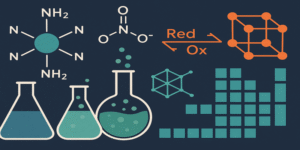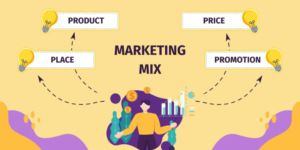Emotional Intelligence (EI) has evolved into a cornerstone of modern leadership theory and practice, fundamentally reshaping how scholars and practitioners understand effective leadership. Since Daniel Goleman’s (1995) pioneering work, Emotional Intelligence: Why It Can Matter More Than IQ, EI has been seen as a crucial determinant of leadership effectiveness, distinguishing exceptional leaders from merely competent ones. This essay explores the theoretical foundations, empirical evidence, and practical applications of EI in leadership, drawing from academic journals, textbooks, and reputable sources.
1.0 The Concept of Emotional Intelligence
Goleman (1995) identified five core dimensions of emotional intelligence: self-awareness, self-regulation, motivation, empathy, and social skills. These competencies enable leaders to understand and manage their own emotions and those of others. According to Mayer, Salovey and Caruso (2008), EI is “the ability to perceive, access, and generate emotions to assist thought, understand emotions and emotional meanings, and regulate emotions to promote emotional and intellectual growth.” This model situates EI as both a cognitive and affective skill, bridging the rational and emotional dimensions of leadership.
In organisational contexts, EI manifests in a leader’s ability to build trust, inspire loyalty, and manage conflict constructively. For instance, Costa et al. (2025), in Collegian, note that EI-based leadership fosters team cohesion and enhances morale, particularly in healthcare environments where emotional labour is high. Similarly, Harahap and Theodora (2025) emphasise that leaders who recognise the emotional needs of multi-generational teams demonstrate greater adaptability and innovation.
2.0 Emotional Intelligence and Leadership Theories
EI complements established leadership models such as transformational, servant, and ethical leadership. Transformational leadership, as outlined by Bass and Riggio (2006), is grounded in inspirational motivation and individual consideration, both of which are closely aligned with EI. Leaders high in EI are more likely to engage followers through emotional connection and shared vision.
According to Suharti (2025), integrating EI within competency-based leadership frameworks enhances decision-making and resilience. In the same vein, Shabbir et al. (2025) found that school leaders with strong emotional intelligence exhibited superior instructional leadership capabilities, indicating a positive relationship between EI and leadership effectiveness.
Moreover, ethical leadership, as discussed by Aniah et al. (2025), is intertwined with EI, as self-awareness and empathy guide moral judgement and ethical decision-making. Leaders with high EI can manage moral dilemmas with greater sensitivity, ensuring decisions align with both organisational values and individual welfare.
3.0 EI and Leadership Effectiveness in Practice
In the corporate sector, emotional intelligence contributes significantly to team performance and organisational commitment. Halwa, Endang and Trisnawati (2025) examined the interplay between EI, transformational leadership, and workload in Jakarta’s municipal offices, revealing that emotionally intelligent leaders mitigated stress and improved employee commitment. This finding supports Boyatzis and McKee’s (2005) concept of resonant leadership, where emotional attunement creates positive organisational climates.
In healthcare, Dharmaratne (2025) argued that “intelligent leadership” rooted in EI is essential for patient safety and quality management. Leaders who practice emotional regulation can make rational decisions even under high pressure, a trait particularly valuable during crises such as the COVID-19 pandemic. Similarly, Muselela, Mweemba, and Mubita (2025) highlighted the role of emotionally intelligent leadership in promoting safety culture in high-risk industries, linking EI to accountability and team empowerment.
4.0 The Neuroscience of Emotional Intelligence
Recent studies have deepened understanding of the biological basis of EI. Goleman (2013) linked EI to neural circuits in the prefrontal cortex and amygdala, which govern emotional regulation and empathy. This neurobiological perspective reinforces the argument that emotional intelligence is not merely a soft skill but a trainable neurological capability.
In their 2025 book chapter, Bulkan and Higgs explore how leaders’ emotional regulation abilities impact organisational transformation. They argue that emotionally intelligent leaders can prevent “dark leadership” tendencies, such as narcissism or toxicity, by maintaining empathy and self-awareness under stress.
5.0 Gender and Cultural Dimensions of EI Leadership
EI’s impact is also mediated by gender and cultural context. Sheng and Galloway (2025), studying ethnic Chinese women leaders in the UK, found that cultural intelligence and EI intersect to enhance adaptive leadership in multicultural environments. Female leaders often employ empathy and interpersonal sensitivity more strategically, challenging gender stereotypes in leadership effectiveness.
Cultural factors also influence how emotions are perceived and expressed. Dmowska (2025) demonstrated that gendered expectations shape how managers’ emotional behaviours affect job satisfaction in Polish healthcare organisations. These findings underscore the need for context-sensitive EI training, tailored to specific cultural and social norms.
6.0 Developing Emotional Intelligence in Leadership
The development of EI is both intentional and experiential. According to Tashrif (2025), leadership training in Bangladesh increasingly incorporates EI modules to address communication gaps and emotional literacy deficits among managers. Programmes such as the SWEET Model by Sidor and Dubin (2025) promote a human-centred framework for leadership development that integrates mindfulness, empathy, and reflection.
In educational leadership, Smith (2025) found a direct correlation between principals’ EI levels and school culture quality, suggesting that emotional competence shapes both staff morale and student outcomes. Goleman’s framework continues to influence educational leadership curricula, promoting the cultivation of self-regulated, empathetic leaders.
7.0 Criticisms and Limitations of Emotional Intelligence
Despite widespread acclaim, EI has faced criticism regarding measurement validity and conceptual overlap. Antonakis et al. (2009) argued that EI lacks discriminant validity from personality traits such as agreeableness or neuroticism. Furthermore, instruments like the Mayer-Salovey-Caruso Emotional Intelligence Test (MSCEIT) and Emotional Competence Inventory (ECI) have been criticised for subjective bias and inconsistent results.
However, defenders like Joseph and Newman (2010) propose a cascading model of EI, in which emotion perception influences understanding, which in turn affects regulation and performance. This integrative view bridges ability-based and mixed models, offering a more cohesive theoretical foundation.
8.0 The Future of Emotionally Intelligent Leadership
The convergence of AI, neuroscience, and organisational psychology is redefining how EI is applied in leadership. For example, Jiang et al. (2025) used deep learning algorithms to analyse political leaders’ facial expressions, identifying patterns of emotional regulation associated with public trust and approval. This intersection between technology and emotion science suggests that future leadership assessment may integrate biometric and behavioural data to measure EI more objectively.
Moreover, Costa et al. (2025) advocate embedding EI within leadership curricula and management systems, emphasising that it is not innate but cultivable. This view aligns with Goleman’s (2013) notion that “emotional literacy is not fixed at birth but can be nurtured through awareness and deliberate practice.”
In conclusion, emotional intelligence is not an auxiliary trait but a core leadership competency that shapes how individuals inspire, influence, and manage others. From Goleman’s foundational theory to contemporary empirical research, EI has been shown to enhance communication, ethical judgement, and resilience. It enables leaders to create psychologically safe environments, foster innovation, and navigate complex interpersonal landscapes. As global organisations face unprecedented social and technological shifts, emotionally intelligent leadership remains indispensable for sustainable success.
References
Aniah, E., Azinga, S.A., Ellis, F.Y.A. & Sarpong, D.A.A. (2025) Emotional intelligence and risky driving behaviour: The role of ethical leadership. International Journal of Organizational and Educational Studies. [Available at: https://www.emerald.com/ijoes/article/doi/10.1108/IJOES-08-2024-0241/1304565].
Bulkan, S. & Higgs, M. (2025) Dark Leadership in Managing Change and Transformation. SpringerLink.
Costa, P., Gaspar, F., Nunes, E. & Lucas, P. (2025) Leadership lessons from Sir Ernest Shackleton: A reflective analysis from a nursing perspective. Collegian. Elsevier.
Dharmaratne, G.S.K. (2025) Managing Healthcare with Leadership Wisdom through Academic Excellence, Managerial Excellence, and Emotional Intelligence. Sri Lankan Journal of Medical Administration.
Goleman, D. (1995) Emotional Intelligence: Why It Can Matter More Than IQ. London: Bloomsbury.
Goleman, D. (2013) Focus: The Hidden Driver of Excellence. New York: HarperCollins.
Halwa, S., Endang, R. & Trisnawati, N. (2025) Pengaruh Kecerdasan Emosional, Kepemimpinan Transformasional, Dan Beban Kerja Terhadap Komitmen Organisasi. IKRAITH-EKONOMIKA Journal.
Harahap, E.F. & Theodora, E.M. (2025) Leading Multi-Generational Teams: Bridging Gen Z, Millennial, and Gen X Values. Proceedings of the International Conference on Management and Leadership.
Mayer, J.D., Salovey, P. & Caruso, D.R. (2008) Emotional Intelligence: New Ability or Eclectic Traits? American Psychologist, 63(6), 503–517.
Sheng, I. & Galloway, L. (2025) Leadership and the Intersecting Influences of Gender and Culture: A Study of Ethnic Chinese Women Leaders in the UK. Leadership and Leadership Studies Journal.
Shabbir, M., Batool, R., Abbas, K., Babar, M.A.H. & Sadiqi, T. (2025) Emotional Intelligence as a Predictor of Instructional Leadership Effectiveness among Public Secondary School Head Teachers. ASSAJ Journal.
Smith, V. (2025) The Relationship Between Emotional Intelligence, School Culture, and School Leadership. Abilene Christian University Repository.
Sidor, M. & Dubin, K. (2025) The SWEET Model in Management and Leadership: A Human-Centered Framework for Transformational Change. Sweet Institute Publications.









